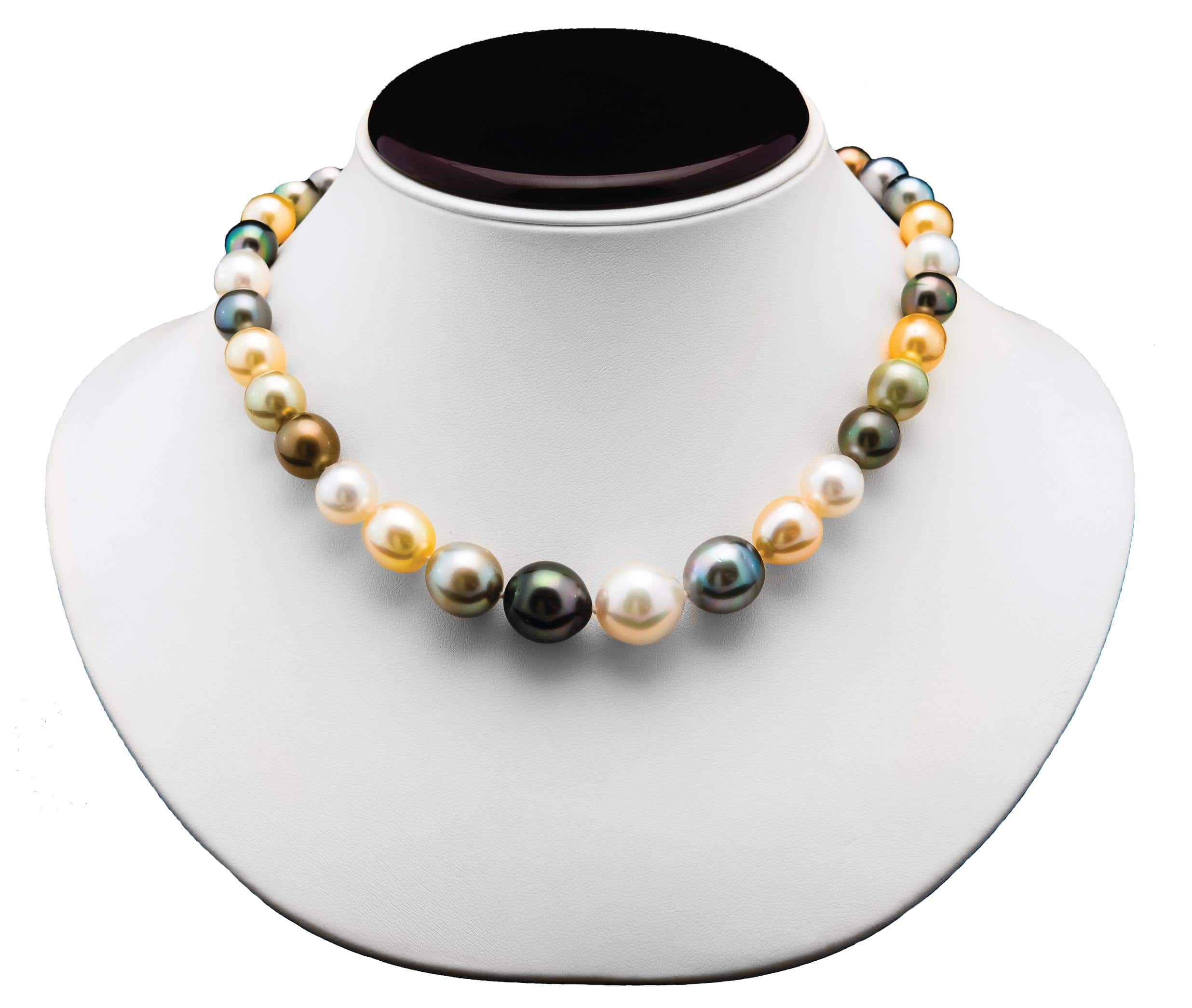
We discuss natural pearls, what they are and how they differ from their counterparts.
First, let’s get some terms correct first. When we talk about natural pearls here, we mean pearls that form naturally. Today when you read about natural pearls they are quite often referring to their natural coloring as opposed to dyed colors. So be sure to clarify when someone says “natural” pearls if they mean naturally colored or true natural pearls that were formed naturally. A true natural pearl is rare and very expensive.
Real natural pearls are composed entirely of nacre (a combination of aragonite and a naturally occurring binder called conchiolin).
Natural Pearls vs. Cultured Pearls
Natural Pearls
An irritant, sometimes just a tiny grain of sand, is trapped in an oyster or other mollusk stimulating the production of nacre. Layer upon layer forms around the irritant until the final pearl comes into being. Consequently, since the irritant in the natural pearl is usually so small the pearl is formed with a very thick nacre. The thicker the nacre the more lustrous the pearl. Natural pearls are very rare and are very pricey.
+ Only one in 10,000 wild oysters will produce a natural pearl.
+ Of these, only a small amount will be gem quality – literally one in a million.
Cultured Pearls
On the other hand, in cultured pearls, the irritant is usually larger and always placed by humans into the mollusk. With the larger irritant, it takes fewer layers of nacre and less time to make a full-size pearl. Therefore, cultured pearls are not rare, but they are much more affordable and still very beautiful.
Freshwater and saltwater pearls form in the same manner.
Natural Pearl Beds
Present-day natural pearling is confined mostly to the seas off Bahrain in the Persian Gulf. For over 2,000 years these waters have produced pearls.
Today natural undersea beds of pearl-producing oysters are VERY rare! Some wild oysters are still found around Australia who has one of the world’s last remaining fleets of pearl diving ships. And currently, Mexico is beginning to revive some of its world-famous natural oyster beds in an earth-friendly manner.
For thousands of years pearls have been highly prized for jewelry. Some of the earliest and most famous of natural pearl beds were in Mexico. Spanish explorers discovered the pearls being worn by Mexican natives in the mid-1500s. Henceforth, from 1535 to 1821 thousands of pearls were exported to Europe from Mexico on a continual basis. These pearls had no rivals in the world! An article from The New York Times in 1903 says in regard to Mexico’s pearls, they are “the finest jewels of this kind found anywhere in the world”. Touting that the area is acclaimed and “noted for its fancy pearls – that is to say, the colored and especially the black ones”.
Freshwater & Saltwater Pearls
Although both varieties share most of the same chemical and physical properties, the marine (or saltwater) specimens have historically set the standard of beauty for the appearance of all pearls. Natural freshwater pearls are more irregularly shaped and have less luster. However, with improved cultivation techniques, today’s farmed freshwater pearls can now come close to matching saltwater pearls in appearance. Because of these farming techniques, freshwater pearls are now much more affordable than marine pearls. But if you see the two side by side you can tell the marine pearls still excel in beauty over the freshwater pearls.
Since marine pearls are still the gold standard for beautiful pearls, the demand remains strong. However, most saltwater (or marine) pearls are cultured rather than natural because historically as well as in today’s world, even the tiniest of natural pearls demands a very hefty price tag.
Matching Pearls
The secret to matching pearls, including natural pearls, is to match them according to age. Unlike humans, pearls age at the same rate. So choosing pearls of the same age is critical to make sure they match and thereby assuring they all look the same over the life of the strand.
At Copeland Jewelers Austin, Tx our manager has been stringing pearls for over 25 years. We can help you with natural pearls – what you need to know and how to choose the right pearls for your style and budget.
